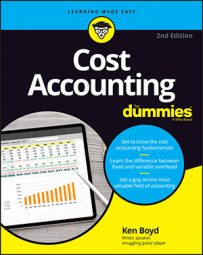Just-in-time purchasing (JIT purchasing) is a cost accounting purchasing strategy. You purchase goods so that they’re delivered just as they’re needed to meet customer demand. With JIT, when you get customer orders, you plan purchases. You purchase the minimum number of items to meet customer demand. JIT purchasing typically results in more smaller orders and frequent deliveries.
The goal of JIT purchasing is to reduce the carrying cost of inventory. Less inventory on hand means you pay less in storage and insurance costs. JIT also requires less cash in the short term.
Operating cycle is the average period of time from when you purchase inventory to when you collect cash for the sale. Say your operating cycle is 75 days. With JIT purchasing, you’re buying less inventory, and therefore you’re using less cash. As a result, you’re not under as much pressure to collect cash.
There are several benefits to JIT purchasing, but there are risks, too. You need to manage the process carefully. If you don’t, you may have stockouts. Stockouts can lead to lost business — both short-term and long-term.
Two big factors can drive down the cost of your inventory: technology and long-term contracts. That’s a benefit.
Using technology can sharply reduce your ordering and carrying costs. Technology allows you to create and approve purchase orders, update your inventory records, and pay for inventory electronically. Technology also allows many firms to have access to real-time inventory quantities. This change reduces the number of hours your staff spends on inventory. Fewer staff hours mean less expense.
Another big factor is long-term contracts. If you contract long-term with a supplier, you lock in an inventory price and the amounts to be purchased over time. You eliminate price fluctuations, which makes planning easier. You may also be able to secure discounts by entering into a long-term contract. Other benefits, such as superior quality expectation and on-time delivery, are expected with a long-term contract.
Of course, it’s important that the long-term contract provides enough inventory to meet your needs. If you need to buy more product over and above the supplier contract, you’ll probably pay higher unit costs. That’s because you may be buying at the last minute, and you’ll also be buying a much smaller amount than what’s in the contract. A supplier, therefore, is likely to demand a higher price for these “extra” orders.
Here are two risk factors to consider before implementing JIT purchasing:
Carrying costs: JIT purchasing allows you to carry fewer inventory items. Some of your carrying costs may be fixed. If you carry less inventory, you won’t need as much storage. But if you have a lease on storage space, you’re paying the same amount for storage until the lease ends. JIT purchasing means that you spread the same lease cost over fewer units in inventory. The carrying cost per unit increases.
Ordering costs: With JIT purchasing, you place smaller orders more frequently. Your supplier may need to increase the cost per order to cover their costs. For example, if you change from 10 orders a month to 100, the supplier may need to add some fixed costs. The fixed cost might include more staff or an upgraded computer system to process so many more orders.
JIT purchasing works, not only for retailers, but also for manufacturers. Toyota implemented Kanban, which (generally speaking) is a scheduling system for JIT production. It applies to the purchasing of materials that flow into the factory and incidentally to the flow of work-in-process from one department to the next.

